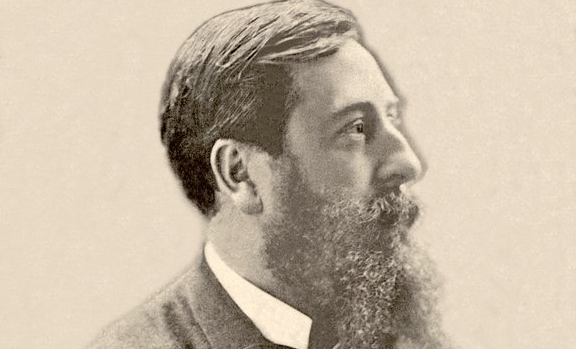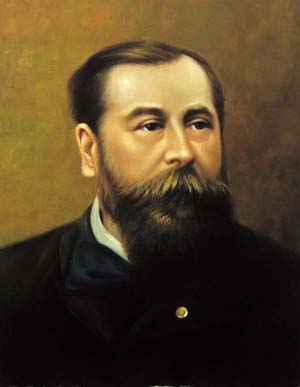Early Life and Education (1836–1855)
Léo Delibes, born Clément Philibert Léo Delibes on February 21, 1836, in Saint-Germain-du-Val, France, was destined for a life immersed in music. His father was a mailman, but his mother and uncle were musicians, giving young Léo an early exposure to music. After his father’s death, Delibes moved to Paris with his mother, where his musical talent blossomed. At the age of 12, he entered the Paris Conservatoire, studying under renowned composers like Adolphe Adam and François Bazin. His early education prepared him for a versatile career in both sacred and theatrical music.
Theatrical Beginnings and Early Works (1855–1865)
Delibes started his professional career as an accompanist and chorus master at the Théâtre Lyrique and later at the Paris Opéra. His early works were operettas, a genre that was immensely popular in mid-19th-century Paris. Though these early efforts, such as Deux sous de charbon, ou Le suicide de Bigorneau (1856), showed his talent for catchy melodies, it was his later works that solidified his reputation.
During this period, Delibes also composed a number of religious pieces and romances, which were well-received in French salons. His ability to craft beautiful, singable melodies set him apart from his contemporaries.
Breakthrough and Ballet Success: Coppélia and Sylvia (1866–1880)
Delibes’ big break came with the ballet Coppélia (1870), which became one of his most famous works. This ballet, based on a story by E.T.A. Hoffmann, features the humorous and touching tale of a life-sized dancing doll. Delibes’ score was praised for its lively and engaging orchestration, with colorful use of folk dances and romantic melodies that appealed to audiences and critics alike. Coppélia remains a cornerstone of the ballet repertoire to this day, celebrated for its wit, charm, and musical invention.
In 1876, Delibes composed Sylvia, another highly acclaimed ballet, this time based on classical mythology. The score is known for its sophisticated orchestration and thematic richness. Though not as immediately popular as Coppélia, Sylvia eventually earned its place in the ballet canon and is admired for its complexity and mature expression.
Operatic Triumph: Lakmé (1881–1891)
While Delibes had already earned a reputation as a ballet composer, his fame soared further with his opera Lakmé (1883). This three-act opera, set in British-occupied India, is best known for its famous “Flower Duet” and the stunning “Bell Song.” These pieces have since become iconic in the opera world, with the “Flower Duet” being featured in numerous films and advertisements.
Lakmé is celebrated for its exoticism, lyrical beauty, and delicate orchestration. The opera showcases Delibes’ ability to merge lush melodies with complex characters and dramatic situations. Lakmé remains one of the few operas from this era to maintain a regular place in the international repertoire.
Later Years and Legacy (1891–1900)
In the last decade of his life, Delibes continued composing but produced fewer major works. His health began to decline, and he spent much of his time teaching and enjoying his reputation as one of France’s leading composers. Léo Delibes died on January 16, 1891, in Paris at the age of 54.
Though Delibes is primarily remembered for his ballets and Lakmé, his influence on French music is profound. His ability to blend lightness and grace with sophisticated orchestration helped bridge the gap between popular music and the more serious operatic and symphonic traditions. His works continue to enchant audiences with their elegance, charm, and tuneful brilliance.
Musical Style and Contributions
Léo Delibes’ music is often characterized by its melodiousness, elegance, and a deft use of orchestral colors. He had a unique ability to convey vivid emotions through seemingly simple yet carefully crafted melodies. While his early operettas laid the foundation for his style, his later works displayed a growing depth and maturity. His contributions to ballet, particularly, are considered revolutionary, as he was one of the first composers to create scores where the music itself became integral to the narrative and emotional depth of the dance.
Key Works
- Coppélia (1870) – A lively, playful ballet based on a story by E.T.A. Hoffmann.
- Sylvia (1876) – A mythological ballet praised for its orchestral complexity.
- Lakmé (1883) – An opera best known for the “Flower Duet” and the “Bell Song.”
Legacy
Delibes is often seen as a transitional figure between the lighter operatic traditions of the mid-19th century and the more serious, emotionally complex works that followed. His ballets are now regarded as masterpieces of the genre, and his operatic arias continue to be favorites among singers and audiences alike. Through his works, Delibes remains a beloved figure in classical music, known for bringing joy, elegance, and a touch of French flair to the world of ballet and opera.


Comments are closed